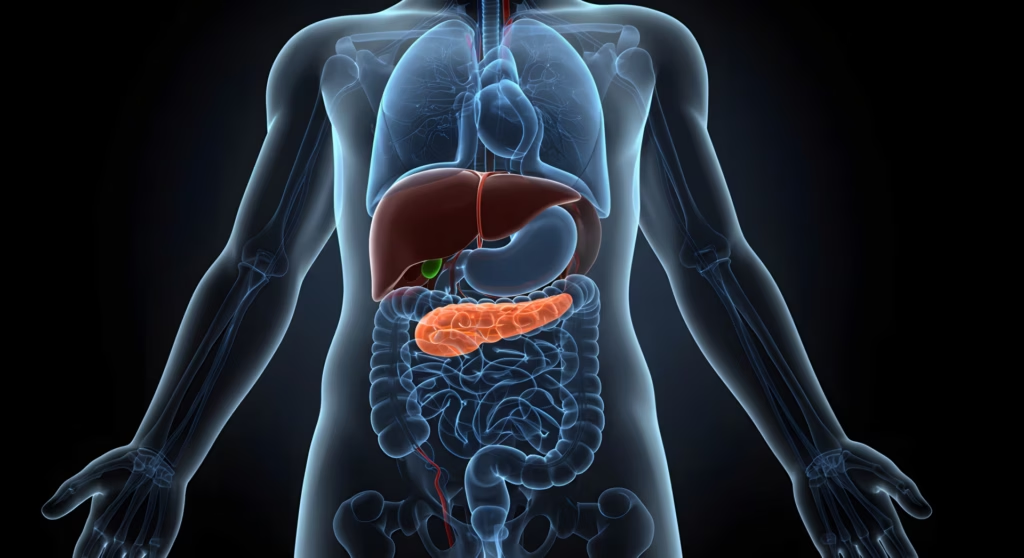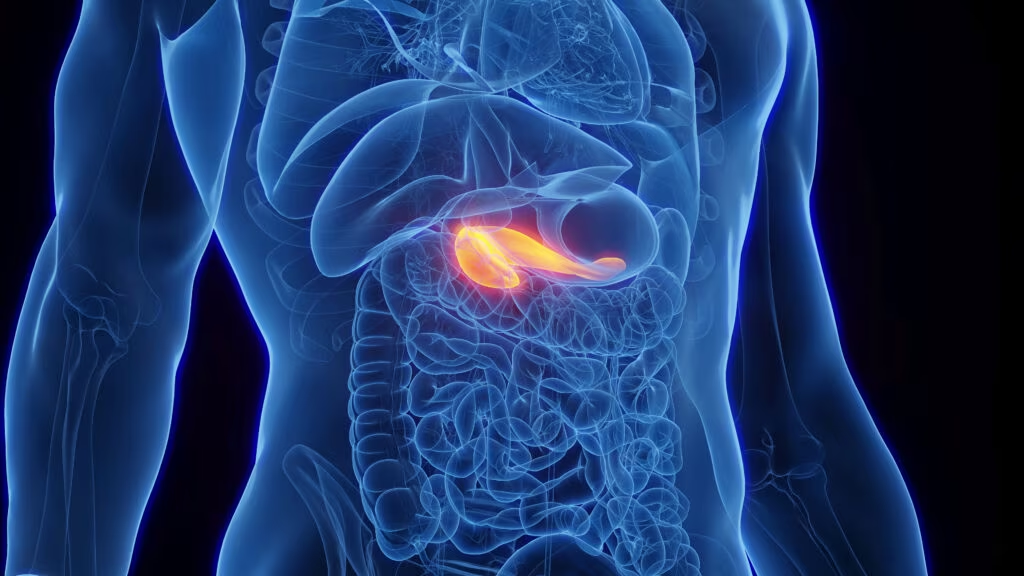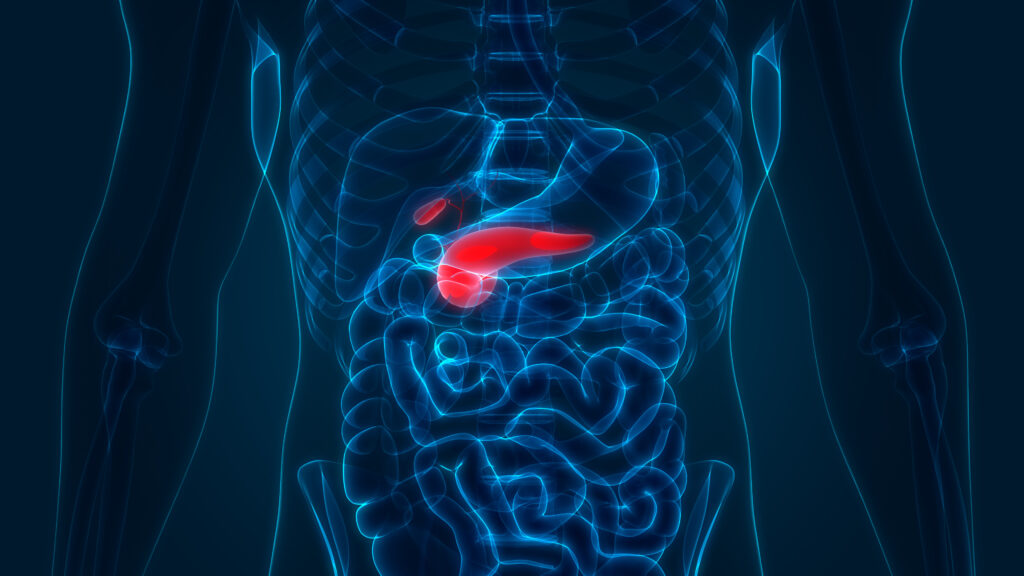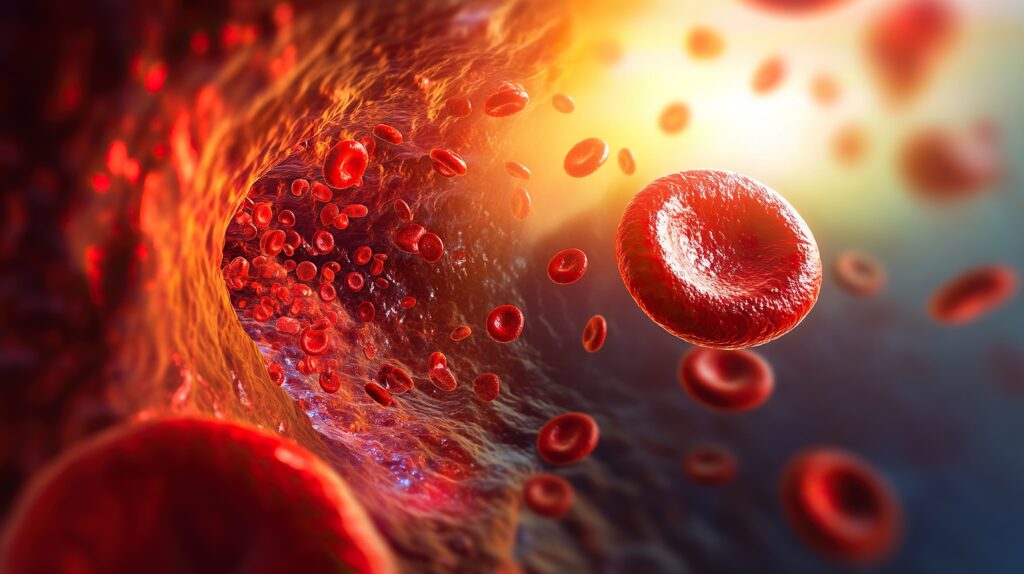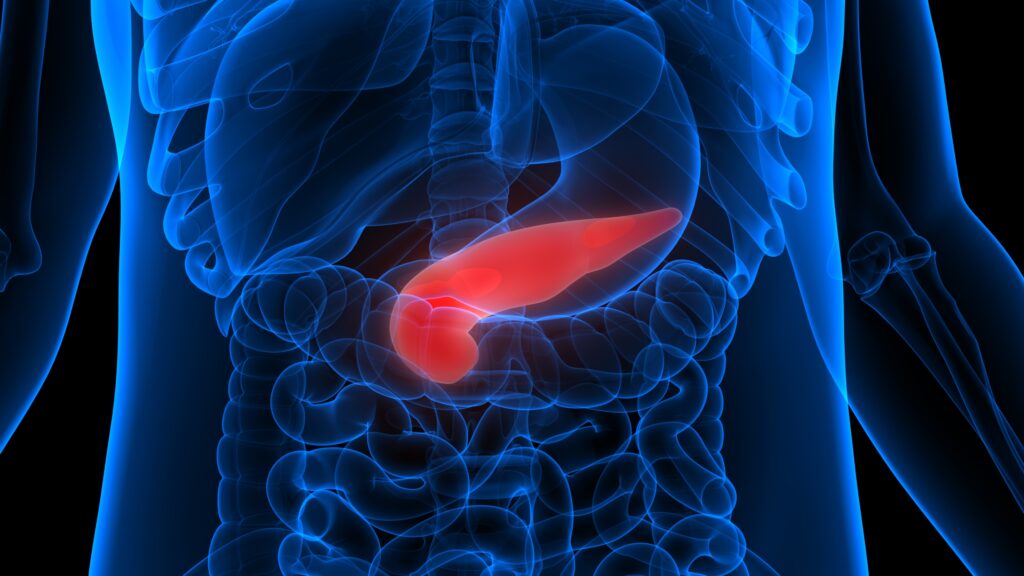Clinical Complexity of Type 2 Diabetes
Clinical Complexity of Type 2 Diabetes
Clinically, one can distinguish three states—normal, impaired glucose tolerance, and overt diabetes—characterized by specific cut-offs of blood glucose levels either while fasting or after an oral glucose load. However, T2D is a clinically heterogeneous disease often associated with complicating features of the metabolic syndrome such as obesity, dyslipidemia, hypertension, insulin resistance, and/or hyperinsulinemia. These physiological abnormalities may have overlapping molecular and genetic causes to further complicate diagnosis and treatment options. Many but not all patients develop comorbidities, including retinopathy, nephropathy, neuropathies, and cardiovascular disease. The potential for these unpredictable manifestations of the disease cannot be assessed during initial management, potentially leading to sub-optimal clinical care.2
Today, a physician may choose from a panel of seven drug classes, roughly grouped into four areas of action: increase of insulin secretion by the pancreas (sulfonylurea, meglitinides, exenatide, dipeptidyl peptidase-4 inhibitors), decreased glucose absorption by the intestines (α-glucosidase inhibitors), inhibition of glucose production in the liver (biguanide), and enhanced insulin sensitivity in adipose and peripheral tissues (thiazolidinediones). Thus, current medical management of T2D can be a lengthy and costly trial-and-error method before good glucose homeostasis is achieved.
Genetic Complexity of Type 2 Diabetes
Genetic factors are known to play an important part in the development of T2D, as exemplified by rare monogenic subtypes, the high prevalence in particular ethnic groups, and its modification by genetic admixture and the difference in concordance rates between monozygotic and dizygotic twins.3
Monogenic forms of T2D account for up to ~5% of T2D, but most cases of T2D do not show clear, Mendelian inheritance patterns. The extent to which multiple genes and the environment impact disease susceptibility and progression is still a subject of research. New technologies now facilitate this task. These include genome-wide linkage scans, which explore the co-segregation of genetic segments in affected members of the same family. Over 50 family-based linkage studies on a variety of populations have been reported. The availability of high-density singlenucleotide (SNP) arrays now allows researchers to perform genome-wide case-control association scans. Association studies investigate the relationship between disease and a genetic marker or a set of markers, comparing a population of affected individuals with a population of nonaffected subjects.
Monogenic Forms of Type 2 Diabetes
Maturity-onset Diabetes of the Young
Classically, maturity-onset diabetes of the young (MODY) is characterized by an autosomal dominant mode of inheritance, a diagnosis of T2D before the age of 25 years, and a primary defect of insulin secretion. Six MODY genes have been identified to date. Most frequently, MODY is due to either mutations in the gene for the beta-cell glucose-sensing hexokinase glucokinase (MODY2) or mutations in hepatocyte nuclear factor-1alpha (TCF1, MODY3). Most of the remaining MODY sub-types are associated with mutations in genes for transcription factors expressed in the pancreatic beta cells: hepatocyte nuclear factor 4alpha (MODY1), insulin promoter factor-1 (MODY4), hepatocyte nuclear factor-1beta (MODY5), and NeuroD/Beta2 (MODY6). About 10% of MODY cannot currently be explained through mutations in any of these genes.
Importantly, mutations in particular genes show distinct clinical characteristics in view of severity, the prognosis for disease development, and the risk of complications. Patients with MODY2 present with mild and stable hyperglycemia that is present from birth. Microvascular complications are rare and pharmacological treatment of hyperglycemia is usually not required. In contrast, MODY3 patients show severe hyperglycemia, usually after puberty, which may lead to the diagnosis of type 1 diabetes. Despite the progression of insulin secretion defects, MODY3 patients are quite sensitive to sulfonylurea treatment. Risk of diabetic retinopathy and nephropathy are high in MODY3, making frequent follow-up mandatory. In contrast, the frequency of cardiovascular disease seems not to be increased in MODY patients. In patients with MODY5, due to mutations in hepatocyte nuclear factor-1beta, diabetes is associated with pancreatic atrophy, renal morphological and functional abnormalities, and genital tract and liver test abnormalities. It is also noteworthy that, although MODY is predominantly inherited, penetrance or expression of the disease may vary and a family history of diabetes is not always present. Neonatal Diabetes
Neonatal diabetes is characterized by hyperglycemia during the first six months of life, developing into either a permanent form of diabetes (permanent neonatal diabetes mellitus, PNDM) or presenting early remission and re-emergence of T2D in adulthood (transient neonatal diabetes, TNDM). Paternal over-expression of the ZAC and HYMA1 genes on chromosomes 6q are responsible for most cases of TNDM.5 Mutations in the gene KCNJ11 encoding Kir6.2—one of two components forming the beta cell potassium adenosine tri-phosphate (KATP) channel that is central to glucose-stimulated insulin secretion and the target for sulfonylurea drugs—have been identified in ~35% of patients with PNDM.6 Mutations in KCNJ11 are also the cause of cases of TNDM not associated with a defect on chromosome 6.7 Sulfonylureas activate the closure of the potassium channel. Patients with mutations in KCNJ11 can therefore successfully be treated with sulfonylureas.8
Mutations in the ABCC8 gene, which encodes the sulfonylurea receptor in the second component of the beta cell KATP channel, can also result in both TNDM and PNDM.9
Other Rare Forms of Monogenic Diabetes
A separate class of monogenic diabetes is caused by mutations in the mitochondrial genome. This diabetes is characterized by either a maternal inheritance associated with deafness (MIDD) or myopathy and stroke-like episodes (MELAS). A compromised mitochondrial metabolism may be the primary pathogenic event in the beta cells, leading to defective insulin secretion.10
Another rare cause of familial diabetes associated with pancreatic exocrine dysfunction is due to mutations in the carboxyl ester lipase (CEL) gene.11 Familial insulin resistance associated with lipodystrophy can be due to mutations in either the nuclear lamina genes LMNA12 and LMNB213 or the gene encoding peroxysome-proliferator-activated receptor (PPARG).14
Complex Genetics of Late-onset Type 2 Diabetes
Late-onset T2D is considered to be polygenic, following no clear Mendelian inheritance pattern. The term polygenic implies that any individual gene increases the susceptibility to develop T2D, which, by interacting with other pro-diabetic genes and environmental factors (e.g. sedentary life, excess calories, smoking, stress, and chronic inflammation), will cause disease.
Although a susceptibility gene alone is not strong enough to cause diabetes, it may significantly contribute to traits that result in a sub-phenotype (lower insulin sensitivity or secretion, visceral obesity), sometimes also called pre-diabetic or intermediate traits.
The Era Before Genome-wide Association Scans
Using conventional genetic approaches, i.e. association studies of candidate genes and/or familial linkage studies, numerous potential susceptibility genes with evidence for association have been reported, though it has proved difficult to replicate many findings. However, the unequivocal replications for variants in the genes coding for PPARG potassium inwardly-rectifying channel, subfamily J, member 11 (KCNJ11), and transcription factor 7-like 2 (TCF7L2) that establish them as confirmed diabetes susceptibility genes show that replication can be achieved. Two common coding variants, Pro12Ala of the PPARG gene15 and Glu23Lys of KCNJ11,16 have been consistently associated with diabetes. The Glu23Lys variant was recently shown to be associated with impaired glucose-induced insulin release during an oral glucose tolerance test (OGTT) and impaired suppression of glucagon secretion. TCF7L2 was originally identified through linkage analyses (DECODE genetics group). Several SNPs within the TCF7L2 gene were found to be associated with diabetes.17 The findings were subsequently confirmed in multiple large association studies in a variety of populations of European, African, and Asian descent. The most likely causal variant identified to date is rs7903146, an intronic SNP whose function is unknown. Prospective studies confirmed the impact of TCF7L2 variation on the risk of T2D development. Among participants from the Diabetes Prevention Program, TCF7L2 variation is strongly associated with rates of progression from impaired glucose tolerance to diabetes.18 The exact role of TCF7L2 in the pathophysiology of diabetes is still largely unknown. TCF7L2 is widely expressed and involved in the Wnt signalling cascade.19 The predominant intermediate phenotype associated with TCF7L2 variation is impaired insulin secretion, consistent with the replicated observation that the TCF7L2 association is greater among lean than obese T2D subjects.20
Genome-wide Association Scans
Advances in our knowledge of human genome sequence variation, through efforts such as the International HapMap Consortium, together with the development of high-density SNP arrays and the availability of large well-characterized sample sets, now make genome-wide association scans feasible. Four genome-wide association scans for T2D in European populations have recently been published. The first was performed in a French population of lean T2D patients with familial history of diabetes,21 and the three subsequent scans were performed in the UK (Wellcome Trust Case Control Consortium (WTCCC)),22 and two Finnish/Swedish populations (Diabetes Genetics Initiative, DGI, and FUSION).23,24 The major findings from those scans are the replication of PPARG, KCNJ11, and TCF7L2 and the identification of variants showing genome-wide significant association with T2D in five linkage disequilibrium blocks containing strong positional candidate genes for T2D (see Table 1). The latter includes variants in the zinc transporter SLC30A8 gene; variants in a region containing the genes encoding insulin-degrading enzyme (IDE), the homeodomain protein (HHEX), and kinesin-interacting factor 11 (KIF11); variants in the vicinity of insulin growth factor 2 binding protein 2 (IGF2BP2), cyclin-dependent kinase 5 regulatory sub-unit associated protein 1-like 1 (CDKAL1); and cyclin-dependent kinase inhibitor 2A and 2B (CDKN2A/B).
a Odds ratio are given for homozygous genotype.
OR = odds ratio; CI = confidence interval.
SLC30A8 encodes a zinc transporter expressed solely in the secretory vesicles of beta cells and is implicated in the final stages of insulin biosynthesis, which involve co-crystalization with zinc. Overexpression of SLC30A8 in insulinoma cells increases glucose-stimulated insulin secretion. HHEX is essential for hepatic and pancreatic development and is a target of the Wnt signalling pathway, as is TCF7L2. IDE seems to protect beta-cell function from amylin accumulation and cytotoxicity. CDKAL1 encodes a 579-residue 65kD protein of unknown function that is expressed in pancreatic islet and skeletal muscle. It is homologous to CDK5RAP1, an inhibitor of cyclin-dependent kinase CDK5, which downregulates insulin expression and transduces glucotoxicity signals in pancreatic beta-cells through the formation of p35/CDK5 complexes. The risk allele was nominally associated with reduced insulin secretion in the DGI scan. CDKN2A/2B are highly expressed in pancreatic islets and pituitary and play a role in pancreatic islet regenerative capacity. Likewise, IGF2BP2 is necessary for pancreas development.
Across the four T2D scans completed, TCF7L2 clearly shows the largest effect size with an odds ratio (OR) of 1.37. So far, all other confirmed loci display more modest effect sizes (OR between 1.1 and 1.25), stressing the need for very large sample collections. Even when combining all variants,23 the contribution to diabetes risk is low (0.04–0.5% per locus, ~2.3% combined). Extensive resequencing and fine-mapping will be required to identify the causative variants in those genes, and it might be possible that those variants will show somewhat larger effect sizes. Between all studies, the number of replicated T2D susceptibility loci has now climbed from three to eight. Clearly, from those first genome-wide association scan results, it can be anticipated that many more susceptibility genes have yet to be identified. Interestingly, functional evaluation of all genes identified to date show that defects in pancreatic function seem to be the primary cause of T2D.
Toward Personalized Healthcare for Type 2 Diabetes?
The recent results from the genome-wide association scans are encouraging, in that identifying the genes for T2D is possible. The findings have resulted in new insights that may be used for better management of this frequent and grave disease. Generally speaking, two lines of development toward personalized diabetes care can be distinguished: personalized treatment and prevention through either drugs and/or lifestyle interventions. The different implications are discussed below.
Personalized Treatment
As discussed above, there is now a choice of drugs available that can be used to treat T2D either as stand-alone or combination treatment. It stands to reason that differences in the genetic make-up of individuals translate into differences in efficacy for these drugs. At least some of the genes that have been and will be identified as diabetes genes will contribute to such differences. Therefore, pharmacogenetic testing to establish such differences in response to a drug are a logical next step in the analysis of these genes. Here, we use the term pharmacogenetics in the sense of any treatment following a selection of individuals by their genotypes. This definition is much broader than the definition of genetic variation used during the drug development process to stratify patients in clinical trials. In this definition, pharmacogenetics is already a reality. As discussed above, the diagnosis of MODY should be raised in various clinical circumstances. Patients with glucokinase mutations can very well be treated by diet alone, and knowing about the causal gene helps in making the right treatment choices. In ~10% of cases, patients present with symptoms that lead to a diagnosis of type 1 diabetes and are directly treated by insulin when they actually have a MODY form of diabetes (mainly MODY3). In this clinical sub-group, sulfonylurea can successfully control hyperglycemia. In these misdiagnosed patients, reversion from insulin to sulfonylurea is feasible and should be considered. Likewise, patients carrying mutations in the KCNJ11 gene are spectacularly improved with high doses of sulfonylurea.25 It stands to reason that the newly discovered genes could lead to similar results, providing new tools to guide the choice of treatment. To achieve this, clinical trials on a similar scale to the association studies will be needed. Also, given the relatively modest effect sizes reported to date, multi-gene models rather th
n single gene calculations may be necessary.
Prediction for Prevention
The second large block of application is the prevention of diabetes through early prediction. The efficacy of genetic testing to predict T2D is still hotly debated. The discriminative accuracy of a test is indicated by its sensitivity and specificity (dichotomous test results), or by the area under the receiveroperating
characteristic (ROC) curve (quantitative traits).26 Recently, Weedon et al. reported results from the combined testing of the three common variants unequivocally associated with diabetes in the KCNJ11, PPARG TCF7L2 genes (as discussed above) in a large case/control sample.27 They established an ROC curve based on the risks for each gene variant combination and found an area under the ROC curve for the three polymorphisms of 0.58. Although this figure is still quite low in absolute terms, the corresponding increase in risk (OR 5.71) is significant and comparable to other environmental risk factors. This figure should improve as new susceptibility genes become available. It was estimated that 20–25 risk variants with allele frequencies greater than 0.1 and ORs of 1.5 are required for an area under the curve of about 0.8.28 To assess the applicability of these findings to the general population, large prospective cohort studies will be needed. In this respect, considerable efforts have been made in different countries (UK, Denmark, Finland, Germany) to assemble population-based resources with prospective follow-up. One unanswered question is what impact any predictive test will have. Judging from experience of other diseases, such as the link between cardiovascular disease and smoking, most individuals are reluctant to accept important lifestyle changes as long as they are asymptomatic. Compliance may be increased if drug or drug-like interventions are proposed before the onset of symptoms, as is sometimes the case with statins in cardiovascular disease when risk factors are present. Prediction of disease development from a pre-diabetic state may be another useful application of predictive tests.
Conclusion
During recent months we have seen an explosion of new results in the field of the genetics of T2D with, for the first time, consistent results over many large sample cohorts. It seems very likely that over the next couple of years we will have dissected a large proportion of the genetic make-up that makes people susceptible to the development of the disease. This in turn may lead to pharmacogenetic results that allow us to choose the most suitable treatment from those already available today, as exemplified already by the treatment guidance derived from monogenic diabetes gene tests. This new knowledge may also influence our thinking about T2D (e.g. primarily a beta cell disease rather than a result of insulin resistance) and impact the pathways selected for drug development. Last but not least, in specific cases the ability to predict the disorder with a high enough degree of certainty may lead to increased prevention of the outbreak of T2D.


